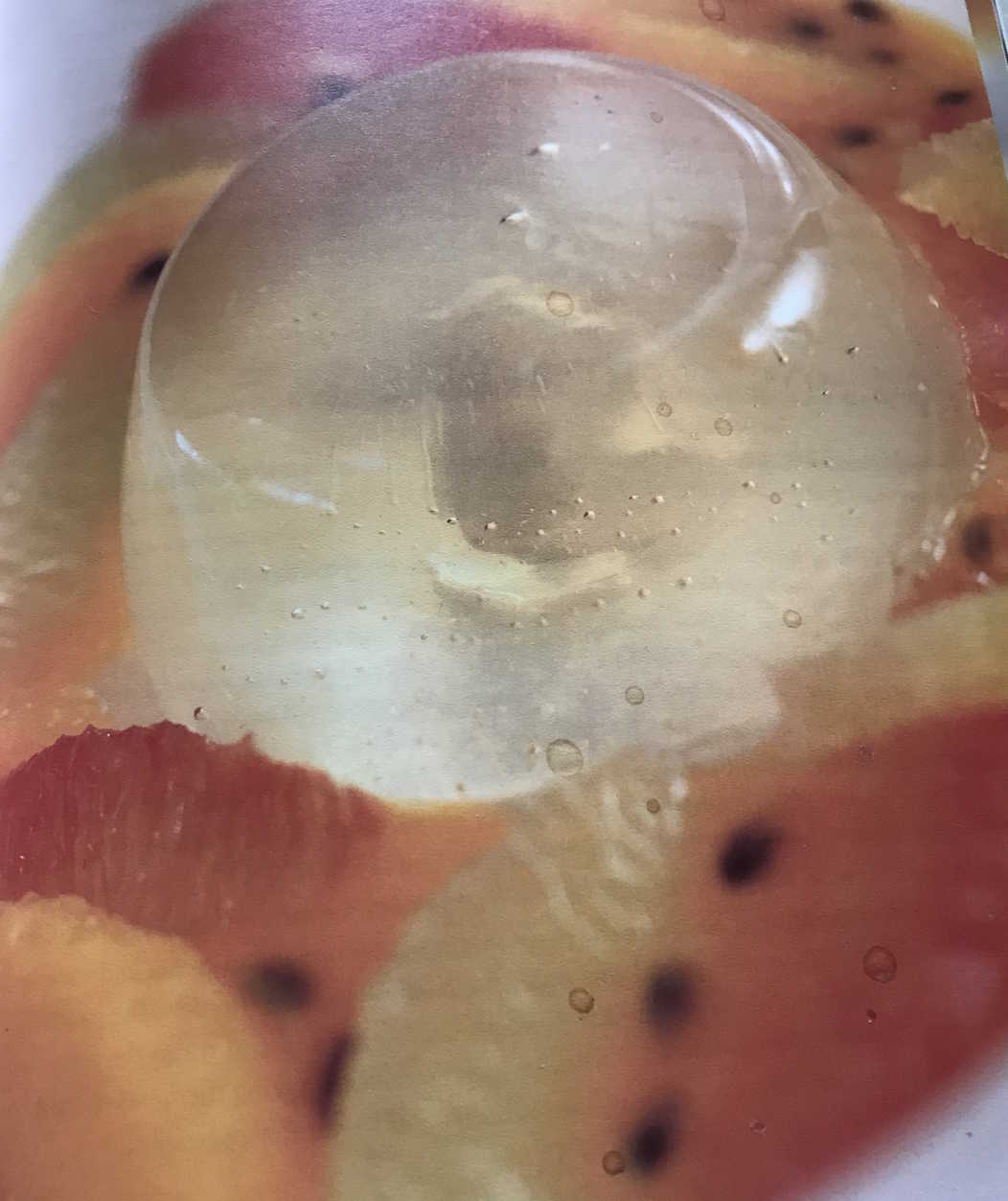
Such A Goose

Finally after all that marmalading, baking and tuiling, Christmas is HERE!
The presents are unwrapped, the stockings are emptied, the liquor miniatures therein have been imbibed, the kids are drunk, and the goose is cooking.
Flora joined us again this year thus making this an unbreakable Christmas tradition (too late now Flora - you can never escape us) and bringing her usual cheesy board, plus some groovy bloody mary vodkas, novelty Christmas recipe ideas, and a surprise collection of leftovers from her school's Christmas party. Kurt and the kids found the oysters particularly challenging. But I enjoyed them - thanks Flora!
Cheeses by Flora:
- Morbier, famously Comté-like cheese with an ash layer in the middle
- Rachel - a goats cheese from Somerset.
Apparently named after a Rachel who was sweet, curvy and slightly nutty.
Well Rachel, two out of three ain't bad, right?? - Moliterno - a raw sheep's milk Pecorino from Sardinia, infused with black truffle after aging
- Murcia al vino (Murcian wine cheese) - a raw goats milk cheese from Murcia in Spain; washed in red wine during maturation
- Apres Soleil - an extremely rich and pleasant hard cows milk cheese matured in Swiss caves where they are regularly bathed in sunlight.
Cheeses by Karl:
- Smelly Ha'peth - a soft blue cow's milk cheese from The Saddleworth Cheese Company in Lancashire, although tarred on its own website with the appelation artisan it's actually not a bad cheese. From a Coronation Street actor anyway.
- Old Amsterdam - a Dutch (as far as I can tell) gouda (though not actually made in Gouda) matured for two years, packed with naturally developed salt crystals and a personal favourite of mine.
- and of course, a gooey slab of Gorgonzola
Stuff we (re-)learned this year:
- We made our usual mistake of trying to time the goose to be cooked at serving time.
We should have allowed an hour resting time (such a large goose will still retain plenty of heat wrapped in foil), meaning we could organise the veg and roasties in the final hour to be perfectly cooked, as opposed to somewhat crispy in our case.
Since our 6kg goose took slightly over 5 hours at Gas Mark 3 we should have started it 6 hours before planning to serve. - No-one likes soggy tuiles starters.
- Good things to do with the inevitable leftover Christmas pud:
- Fry with savouries like bacon, black pudding or mushrooms
- Fry and combine with some of that excess Christmas cheese (Smelly Ha'peth is nice)
Tuiles Stuffed with Goat's Cheese Fondant and Red Onion Marmalade
starter veg cheese
Are these rolled wafer cigars tuiles or is the term tuile reserved for those pringle-shapes? You decide!
I pulled the tuile recipe from Mary Berry (though I'm only making her cigar-shapes here, and just using a half-quantity of the recipe below), the idea for the filling from the fabulous Market Bistro in King's Lynn, which now, sadly, seems to have closed :( and the proportions for goats cheese fondant from Adam Talbot. (Be sure to use a soft but fairly strong cheese.)
Little did I guess how much trouble it would be to reproduce as a Christmas dinner appetiser.
For starters (ahem!) I couldn't find a tuile template so I artfully cut my own from a silicon muffin tray but I suspect the real deal would have been considerably thinner, making it very difficult to crisp up my fat discs. This meant I had to spend far too much time practicing getting the cooking time and temperatures right. Perhaps I should have tried cutting down the lid of one of those plastic sweetie tubs?
Secondly, even after turning out a half-dozen acceptably crispy tuiles, once you stuff them with a vaguely moist filling they quickly soften. So they would have needed stuffing almost immediately before being served - not a practical Christmas plan at all then.
To cut a long story short, no one was impressed. Damn soggyphobes.
I pulled the tuile recipe from Mary Berry (though I'm only making her cigar-shapes here, and just using a half-quantity of the recipe below), the idea for the filling from the fabulous Market Bistro in King's Lynn, which now, sadly, seems to have closed :( and the proportions for goats cheese fondant from Adam Talbot. (Be sure to use a soft but fairly strong cheese.)
Little did I guess how much trouble it would be to reproduce as a Christmas dinner appetiser.
For starters (ahem!) I couldn't find a tuile template so I artfully cut my own from a silicon muffin tray but I suspect the real deal would have been considerably thinner, making it very difficult to crisp up my fat discs. This meant I had to spend far too much time practicing getting the cooking time and temperatures right. Perhaps I should have tried cutting down the lid of one of those plastic sweetie tubs?
Secondly, even after turning out a half-dozen acceptably crispy tuiles, once you stuff them with a vaguely moist filling they quickly soften. So they would have needed stuffing almost immediately before being served - not a practical Christmas plan at all then.
To cut a long story short, no one was impressed. Damn soggyphobes.
The tuile paste should make about 20 cigars or tuiles
Ingredients
- red onion marmalade (other versions are available)
For the Tuiles:- 200g/7oz butter, softened
- 175g/6oz icing sugar
- 1 tsp vanilla extract
- 6 large free-range eggs, whites only, lightly beaten
- 200g/7oz plain flour
For the Goats Cheese Fondant:- 500g goats cheese (rind trimmed)
- 50ml milk
- 100ml double cream
- 2 leaves of gelatine
To make the tuiles mixture:
Use a hand-held electric mixer to mix the butter, sugar and vanilla extract into a paste.
Gradually add the egg whites, whisking all the time.
Fold in the flour a little at a time beating with a wooden spoon between each addition.
Cover the bowl with cling film and leave to rest for 30 minutes.
To bake the tuiles, preheat the oven to 180°C/350°F/Gas 4.
Line a baking tray with parchment or a silicone sheet and place the tuile template in position.
Spread some of the plain tuile paste over the cut out shapes of the template using a palette knife.
Draw the blade across the template to remove any surplus paste. Remove the template by peeling away from the tray, leaving you with paste shapes on the baking tray.
You should be able to make about 20 discs though rectangles can make better cigars (from the full ingredients list above).
Bake for 5-6 minutes, or until pale golden-brown. Remove from the oven and, working very quickly, bend the warm tuiles around wooden spoon handles to make cigar shapes.
If the cooked tuiles start to harden before you have chance to shape them all, return them to the oven for 30 seconds to one minute to soften. They should keep crispy for a day in an airtight container.
To make the goats cheese fondant:
Place the gelatine leaves in cold water for 3 minutes until soft. Meanwhile, warm the milk on the stove and dissolve the soaked gelatine in the warm milk. Place the goat’s cheese, cream and milk mixture into a food processor and blend until smooth.
The mixture will set in the fridge in about 3 hours.
To Serve:
Fill one end of each crisp you wish! tube with fondant using a small spoon. Turn over, push a dollop of red onion marmalade into the centre of the tube, then close the end with more fondant.
Serve immediately.
Use a hand-held electric mixer to mix the butter, sugar and vanilla extract into a paste.
Gradually add the egg whites, whisking all the time.
Fold in the flour a little at a time beating with a wooden spoon between each addition.
Cover the bowl with cling film and leave to rest for 30 minutes.
To bake the tuiles, preheat the oven to 180°C/350°F/Gas 4.
Line a baking tray with parchment or a silicone sheet and place the tuile template in position.
Spread some of the plain tuile paste over the cut out shapes of the template using a palette knife.
Draw the blade across the template to remove any surplus paste. Remove the template by peeling away from the tray, leaving you with paste shapes on the baking tray.
You should be able to make about 20 discs though rectangles can make better cigars (from the full ingredients list above).
Bake for 5-6 minutes, or until pale golden-brown. Remove from the oven and, working very quickly, bend the warm tuiles around wooden spoon handles to make cigar shapes.
If the cooked tuiles start to harden before you have chance to shape them all, return them to the oven for 30 seconds to one minute to soften. They should keep crispy for a day in an airtight container.
To make the goats cheese fondant:
Place the gelatine leaves in cold water for 3 minutes until soft. Meanwhile, warm the milk on the stove and dissolve the soaked gelatine in the warm milk. Place the goat’s cheese, cream and milk mixture into a food processor and blend until smooth.
The mixture will set in the fridge in about 3 hours.
To Serve:
Fill one end of each crisp you wish! tube with fondant using a small spoon. Turn over, push a dollop of red onion marmalade into the centre of the tube, then close the end with more fondant.
Serve immediately.
To pack the fondant into my wafer cigars I had to first fluff the chilled fondant with a fork to loosen it.
If you just want to present the fondant in particular shapes you could use an ice cream scoop to get nice balls, or you could chill the mixture rolled in cling film to produce cylinders.
If you just want to present the fondant in particular shapes you could use an ice cream scoop to get nice balls, or you could chill the mixture rolled in cling film to produce cylinders.
Champagne Jellies
with a citrus fruit salad
with a citrus fruit salad
starter dessert
Flora's Dad used to make these Champagne jellies from Nick Nairn's Island Harvest
and she really fancied having a go at these over Christmas. Apparently they're really tasty. Pity it didn't happen.
Serves 4
Ingredients
- 350ml (12 fl oz) champagne or sparkling dry white wine
- 250g (9 oz) caster sugar
- 1 x 11g sachet powdered gelatine or 4 x 3g sheets leaf of gelatine
For the citrus fruit salad:- 12 passion fruit
- caster sugar, to taste
- 2 ruby grapefruit
- 2 oranges
- 1 lemon
- 1 lime
For the jellies, put the champagne or sparkling wine and sugar into a pan and leave over gentle heat until the sugar has dissolved.
Meanwhile, if using leaf gelatine, leave it to soak in cold water for a few minutes and then lift it out,
stir into the champagne mixture and leave until dissolved.
If using powdered gelatine, but 3 tablespoons of cold water into a small pan, sprinkle over the powder and leave it to 'sponge' for 5 minutes.
Heat very gently until clear and then stir into the champagne mixture.
Pour into 4 wet dariole or mini-pudding moulds and leave to set in the fridge overnight.
The next day, make the citrus fruit salad. Halve the passion fruit and scoop out the pulp into a sieve. Set over a small pan. Press out the juice with a wooden spoon and reserve a few of the seeds for decoration. Discard the rest. Cook the juice over a gentle heat until it thickens, then stir in a little or more caster sugar to taste. Leave to go cold and chill until needed.
Slice the top and bottom off each citrus fruit and then cut away all the skin and white pith with a small, sharp knife. Cut either side of each dividing membrane to remove the fruit in neat segments and then stir them into the passion fruit juice.
To serve, dip the moulds very briefly in warm water and turn the jellies out into the centres of 4 dessert plates. Spoon the citrus fruit salad around them and sprinkle with the reserved passion fruit seeds.
The next day, make the citrus fruit salad. Halve the passion fruit and scoop out the pulp into a sieve. Set over a small pan. Press out the juice with a wooden spoon and reserve a few of the seeds for decoration. Discard the rest. Cook the juice over a gentle heat until it thickens, then stir in a little or more caster sugar to taste. Leave to go cold and chill until needed.
Slice the top and bottom off each citrus fruit and then cut away all the skin and white pith with a small, sharp knife. Cut either side of each dividing membrane to remove the fruit in neat segments and then stir them into the passion fruit juice.
To serve, dip the moulds very briefly in warm water and turn the jellies out into the centres of 4 dessert plates. Spoon the citrus fruit salad around them and sprinkle with the reserved passion fruit seeds.
From a note in the margins of Flora's Dad's recipe book:
The fruit salad can be varied (Cava Rosé (Rosado) in jelly)
and selection of red berries with orange juice & Cointreau - (no sugar).
From Anna Jones
via Flora and an old copy of the Observer magazine.
She reckons it was delicious - well, we'll have to see won't we?
She reckons it was delicious - well, we'll have to see won't we?
Celebration Celeriac and Sweet Garlic Pie
veg main cheese
Another Christmas dish that never was :(
Apparently an excellent yule centerpiece for vegetarians. Vegans being best left out in the cold.
Apparently an excellent yule centerpiece for vegetarians. Vegans being best left out in the cold.
Serves 8-10
Ingredients
For the pastry:- 250g plain spelt flour, plus a little extra for dusting
- 125g unsalted butter, cold, cubed
- ½ tsp fine sea salt
- a few sprigs each of rosemary, thyme and sage, leaves picked and finely chopped
- zest of 1 unwaxed lemon
- 25g good cheddar, grated
- 1 medium egg yolk
- 50-70ml cold water
For the filling:- 3 heads garlic, cloves separated and peeled
- olive oil
- 1 tsp balsamic vinegar
- 2 tbsp runny honey
- 2 sprigs each of rosemary, thyme and sage, leaves picked and finely chopped plus extra to finish
- 1kg celeriac
- 220g Lancashire or good cheddar cheese, crumbled
- 150g creme fraiche
- juice of ½ lemon
- 1 tbsp wholegrain mustard
- a small bunch parsley, chopped
- Worcestershire sauce
- 2 eggs, beaten
Put the flour into a mixing bowl.
Add the butter and salt.
Rub gently with your fingertips until the mixture is like fine breadcrumbs.
Stir through the herbs, lemon zest and cheddar.
Beat the egg yolk with 1 tablespoon of cold water. Add to the flour and mix until it forms a dough. Add more water, a teaspoon at a time, until it comes together into a smooth dough. Wrap in cling film and chill in the fridge while you make the filling.
For the filling, put the cloves of garlic into a saucepan, cover with cold water and bring to a gentle simmer. Cook for 2-3 minutes, then drain.
Wipe the saucepan dry. Add the garlic and 1 tablespoon of olive oil and fry on a high heat for 2 minutes. Add the balsamic vinegar and 100ml water, bring to the boil and simmer gently for 10 minutes.
Add the honey, most of the rosemary and thyme (reserving the rest, with the sage) and a good pinch of salt. Continue to cook on a medium heat for a further 5 minutes, or until most of the liquid has evaporated and the garlic cloves are coated in a dark syrup.
Meanwhile, peel the celeriac and cut it into quarters. Set aside 300g and slice the rest into 2cm-thick pieces. Put them into a saucepan, cover with hot water and boil for 7-10 minutes, until they are soft and have turned slightly translucent.
Drain and tip into a big mixing bowl. Add the cheese, crème fraîche, lemon juice, mustard, parsley, a splash of Worcestershire sauce and eggs. Add a good pinch of salt and grind of pepper and gently fold in the garlic cloves.
Preheat the oven to 180°C/Gas Mark 4. Sprinkle flour on a work surface and roll out the pastry to 3-4mm thick. Line a 20cm-diameter cake tin with the pastry, ensuring a little spills over the edges.
Pour the filling into the pastry case. Coarsely grate the reserved celeriac and pile it on top. Finish with the reserved rosemary and thyme, all the sage, and a drizzle of olive oil. Bake for 45 minutes or until the tart filling has set and the top is golden brown.
Remove from the oven, leave to cool a little, then take it out of the tin. Lay a few herbs on top and serve warm.
Beat the egg yolk with 1 tablespoon of cold water. Add to the flour and mix until it forms a dough. Add more water, a teaspoon at a time, until it comes together into a smooth dough. Wrap in cling film and chill in the fridge while you make the filling.
For the filling, put the cloves of garlic into a saucepan, cover with cold water and bring to a gentle simmer. Cook for 2-3 minutes, then drain.
Wipe the saucepan dry. Add the garlic and 1 tablespoon of olive oil and fry on a high heat for 2 minutes. Add the balsamic vinegar and 100ml water, bring to the boil and simmer gently for 10 minutes.
Add the honey, most of the rosemary and thyme (reserving the rest, with the sage) and a good pinch of salt. Continue to cook on a medium heat for a further 5 minutes, or until most of the liquid has evaporated and the garlic cloves are coated in a dark syrup.
Meanwhile, peel the celeriac and cut it into quarters. Set aside 300g and slice the rest into 2cm-thick pieces. Put them into a saucepan, cover with hot water and boil for 7-10 minutes, until they are soft and have turned slightly translucent.
Drain and tip into a big mixing bowl. Add the cheese, crème fraîche, lemon juice, mustard, parsley, a splash of Worcestershire sauce and eggs. Add a good pinch of salt and grind of pepper and gently fold in the garlic cloves.
Preheat the oven to 180°C/Gas Mark 4. Sprinkle flour on a work surface and roll out the pastry to 3-4mm thick. Line a 20cm-diameter cake tin with the pastry, ensuring a little spills over the edges.
Pour the filling into the pastry case. Coarsely grate the reserved celeriac and pile it on top. Finish with the reserved rosemary and thyme, all the sage, and a drizzle of olive oil. Bake for 45 minutes or until the tart filling has set and the top is golden brown.
Remove from the oven, leave to cool a little, then take it out of the tin. Lay a few herbs on top and serve warm.



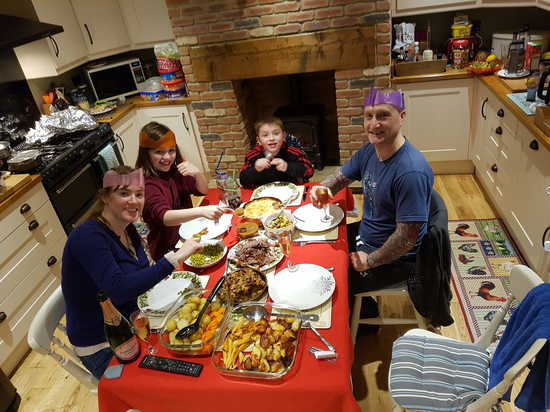
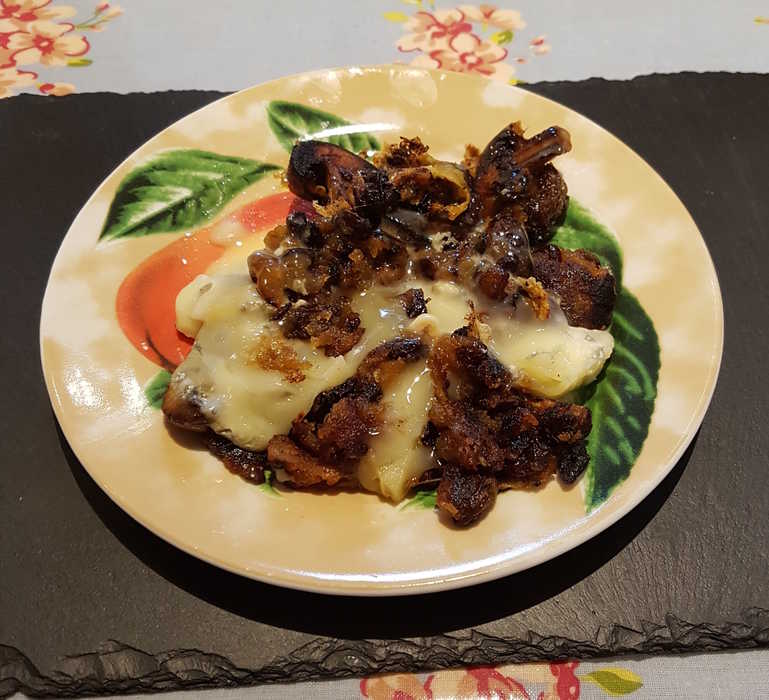
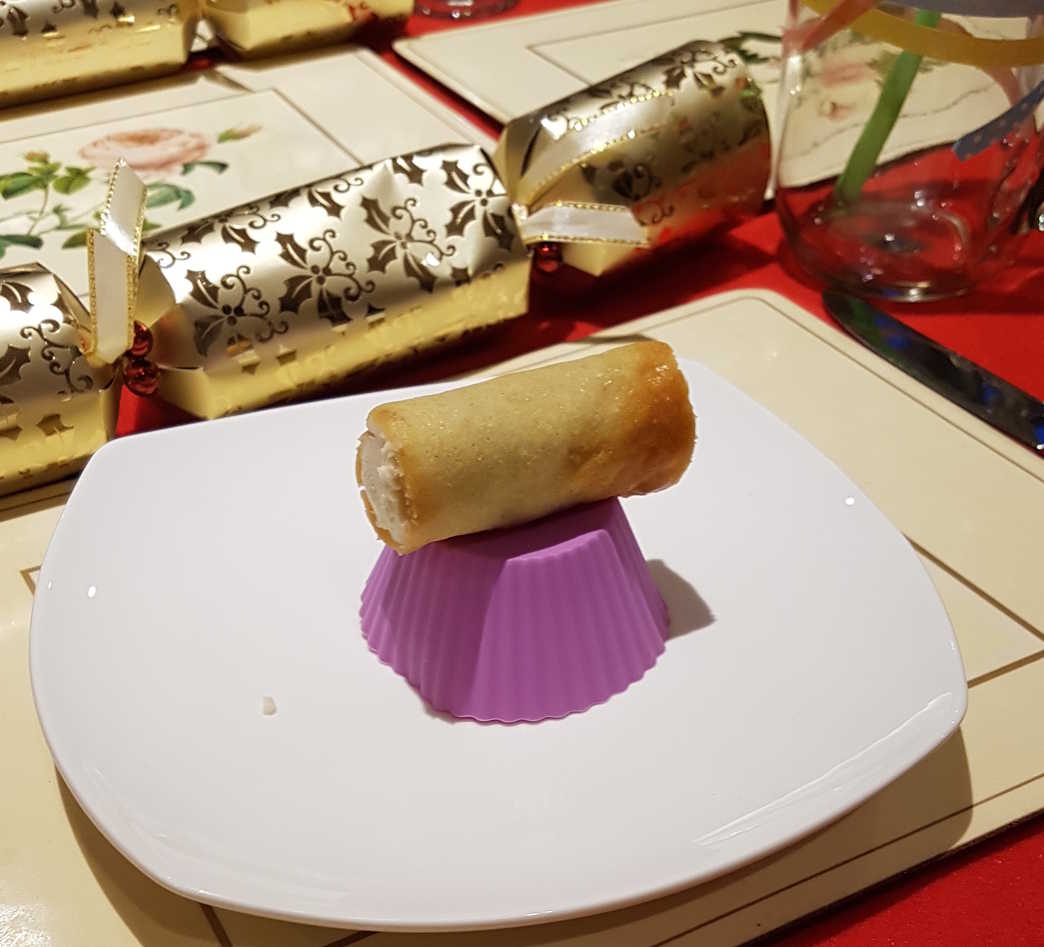
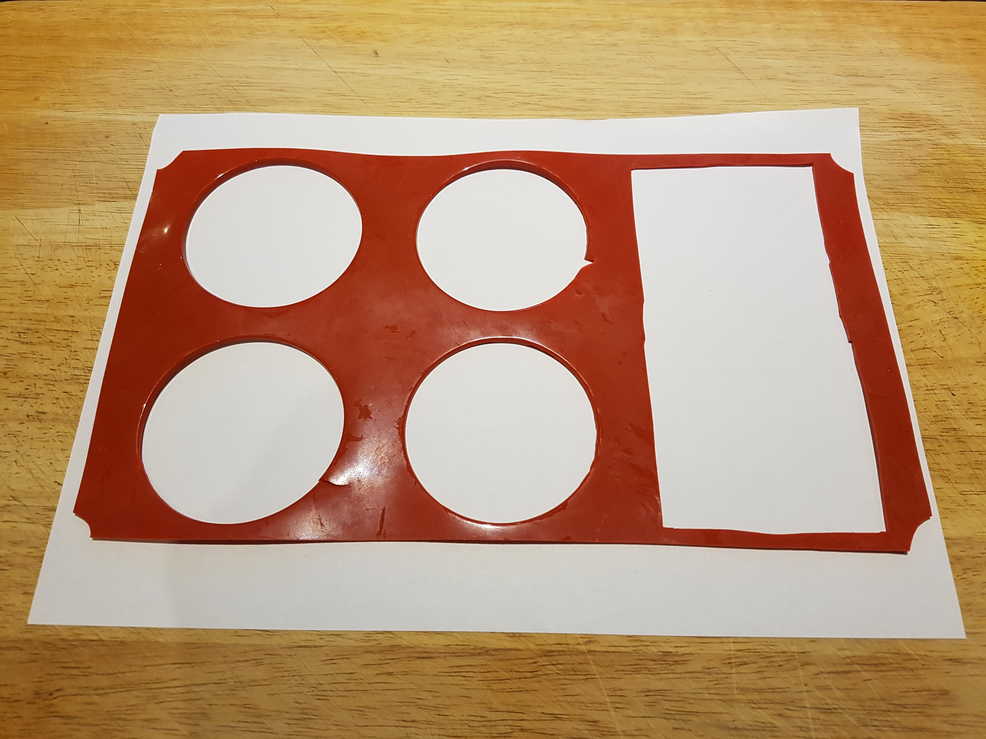
I needed to cook them for quite a lot longer at a lower temperature to get them to crisp through without burning at the edges.